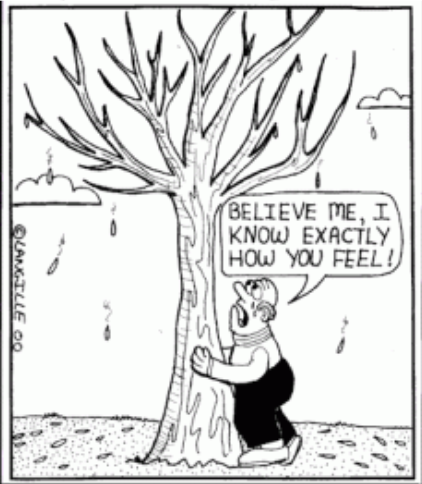Fortieth ISSUE
August 9, 2023
A D-dimer for atopic dermatitis…say what?
Atopic dermatitis (AD) is a chronic immune-mediated skin condition. Research suggests the consequences of AD may extend beyond the skin. Taiwanese researchers were curious if there was an increased risk of venous thromboembolism in AD patients; they performed a retrospective cohort study of patients aged 20 and older with AD using the National Insurance Research Database in Taiwan.
What did they find?
Main Takeaway: There may be an increased incidence of VTE in adult patients with atopic dermatitis; dermatologists should be cognizant of potential cardiovascular symptoms in this patient population.
Atopic dermatitis (AD) is a chronic immune-mediated skin condition. Research suggests the consequences of AD may extend beyond the skin. Taiwanese researchers were curious if there was an increased risk of venous thromboembolism in AD patients; they performed a retrospective cohort study of patients aged 20 and older with AD using the National Insurance Research Database in Taiwan.
What did they find?
- 284,858 total participants, evenly split between number of patients with AD and non-AD
- 1066 patients (0.7%) in the AD cohort and 829 patients (0.6%) in the non-AD cohort developed VTE (incidence rates 1.05 and 0.82 per 1,000 person years, respectively)
- Adults with AD had increased risk of VTE (HR 1.28; 95% CI, 1.17-1.40), but the absolute risk difference was small
Main Takeaway: There may be an increased incidence of VTE in adult patients with atopic dermatitis; dermatologists should be cognizant of potential cardiovascular symptoms in this patient population.
Hydrochlorothiazide use and risk of keratinocyte carcinoma and melanoma
Journal of the American Academy of Dermatology
Hydrochlorothiazide use and risk of keratinocyte carcinoma and melanoma
Journal of the American Academy of Dermatology
Should you ditch the diuretic?
Hydrochlorothiazide (HCTZ) is a frequently prescribed first-line antihypertensive medication. With known photosensitizing properties, there is concern that use of HCTZ may increase skin cancer risk. Several observational studies investigating HCTZ’s association with keratinocyte carcinoma or melanoma have been inconclusive.
This multi-site, population-based cohort study (HCTZ cohort n = 511,115; ACEI cohort n = 763,611) sought to determine whether HCTZ is associated with an increased risk of skin cancer, compared to angiotensin-converting enzyme inhibitors (ACEi) and calcium channel blockers (CCB).
What did they find?
· HCTZ was not associated with an overall increased risk of keratinocyte carcinoma compared to ACEi (HR: 1.02; 95% CI: 0.98-1.07) or CCB (HR: 1.08; 95% CI: 0.99-1.17)
· Long-term HCTZ use of 5 to 10 years (HR: 1.09; 95% CI: 1.04-1.14) and ≥ 10 years (HR 1.12; 95% CI: 1.03-1.21) was associated with an increased risk of keratinocyte carcinoma compared to ACEi
· Higher cumulative doses of HCTZ (≥ 100,000mg) increased the risk of keratinocyte carcinoma compared to ACEi (HR: 1.49; 95% CI: 1.27-1.76) and CCB (HR: 1.59; 95% CI: 1.29-1.97)
· HCTZ was associated with a 32% increased risk of melanoma compared to CCB (HR: 1.32; 95% CI: 1.19-1.46) with evidence of increased risks with longer duration of use and higher cumulative doses.
Main Takeaway: This study found that prolonged use and higher cumulative doses of HCTZ were associated with an increased risk of keratinocyte carcinoma and melanoma.
Hydrochlorothiazide (HCTZ) is a frequently prescribed first-line antihypertensive medication. With known photosensitizing properties, there is concern that use of HCTZ may increase skin cancer risk. Several observational studies investigating HCTZ’s association with keratinocyte carcinoma or melanoma have been inconclusive.
This multi-site, population-based cohort study (HCTZ cohort n = 511,115; ACEI cohort n = 763,611) sought to determine whether HCTZ is associated with an increased risk of skin cancer, compared to angiotensin-converting enzyme inhibitors (ACEi) and calcium channel blockers (CCB).
What did they find?
· HCTZ was not associated with an overall increased risk of keratinocyte carcinoma compared to ACEi (HR: 1.02; 95% CI: 0.98-1.07) or CCB (HR: 1.08; 95% CI: 0.99-1.17)
· Long-term HCTZ use of 5 to 10 years (HR: 1.09; 95% CI: 1.04-1.14) and ≥ 10 years (HR 1.12; 95% CI: 1.03-1.21) was associated with an increased risk of keratinocyte carcinoma compared to ACEi
· Higher cumulative doses of HCTZ (≥ 100,000mg) increased the risk of keratinocyte carcinoma compared to ACEi (HR: 1.49; 95% CI: 1.27-1.76) and CCB (HR: 1.59; 95% CI: 1.29-1.97)
· HCTZ was associated with a 32% increased risk of melanoma compared to CCB (HR: 1.32; 95% CI: 1.19-1.46) with evidence of increased risks with longer duration of use and higher cumulative doses.
Main Takeaway: This study found that prolonged use and higher cumulative doses of HCTZ were associated with an increased risk of keratinocyte carcinoma and melanoma.
Can JAK3 kinase inhibitors be used to treat alopecia areata in adolescents?
Journal of Pediatric Dermatology
If she doesn’t want to try ritlecitinib for alopecia areata that’s hair loss!
Alopecia areata (AA) is an autoimmune disease that causes round patches of non-scarring hair loss on the scalp, face, and/or body. Currently, there are no approved systemic treatments for AA in adolescents. Researchers conducted a randomized, double-blind, placebo-controlled study of patients with >50% scalp hair loss with a current AA episode lasting >6 months to evaluate the efficacy and safety of Ritlecitinib, an oral dual JAK3/TEC kinase inhibitor. 105 pediatric patients between the ages of 12 and 17 were randomized into once daily Ritlecitinib 50 or 30 mg (+/- 4-week 200 mg loading doses), Ritlecitinib 10 mg, or placebo groups for 24 weeks.
What did they find?
Main Takeaways: Ritlecitinib has an acceptable safety profile and both clinician- and patient-reported efficacy in the treatment of adolescents with >50% scalp hair loss from AA.
Alopecia areata (AA) is an autoimmune disease that causes round patches of non-scarring hair loss on the scalp, face, and/or body. Currently, there are no approved systemic treatments for AA in adolescents. Researchers conducted a randomized, double-blind, placebo-controlled study of patients with >50% scalp hair loss with a current AA episode lasting >6 months to evaluate the efficacy and safety of Ritlecitinib, an oral dual JAK3/TEC kinase inhibitor. 105 pediatric patients between the ages of 12 and 17 were randomized into once daily Ritlecitinib 50 or 30 mg (+/- 4-week 200 mg loading doses), Ritlecitinib 10 mg, or placebo groups for 24 weeks.
What did they find?
- At Week 24, 17-28% of adolescents in the ritlecitinib 30 mg and higher groups had a Severity of Alopecia Tool (SALT) score <20 (corresponding to <20% scalp without hair), vs 0% of adolescents in the placebo and Ritlecitinib 10 mg groups
- At Week 24, 45-61% of adolescents in the Ritlecitinib 30 mg and higher groups reported “moderately” or “greatly” improved AA based on the Patient Global Impression of Change scale, vs 10-22% of adolescents in the placebo and Ritlecitinib 10 mg groups
- Adverse events were reported in 65-83% of adolescents in the Ritlecitinib groups and 79% of the placebo group, which were mostly mild or moderate and included headache, acne, and nasopharyngitis
Main Takeaways: Ritlecitinib has an acceptable safety profile and both clinician- and patient-reported efficacy in the treatment of adolescents with >50% scalp hair loss from AA.
A built in linear polarized illuminator for the smartphone could change the use of the Dermatoscope
Journal of the American Academy of Dermatology
Journal of the American Academy of Dermatology
You’ve heard of the iPhone, but have you heard of the iDermatoscope?
A dermatoscope is a tool used by dermatologists to better visualize and diagnose skin lesions. Their polarized light setting provides optimal illumination of the skin. The development of a smartphone dermatoscope would allow for increased scope access and aid in diagnosing skin lesions during telemedicine visits if incorporated into the current iPhone infrastructure.
How does it work?
A dermatoscope is a tool used by dermatologists to better visualize and diagnose skin lesions. Their polarized light setting provides optimal illumination of the skin. The development of a smartphone dermatoscope would allow for increased scope access and aid in diagnosing skin lesions during telemedicine visits if incorporated into the current iPhone infrastructure.
How does it work?
- A makeshift light reflector was attached to a smartphone built-in flashlight
- A metal cylinder attached to the light source periphery using adhesive putty
- The cylinder focused and prevented unfiltered light from escaping to surroundings
- The cylinder focused and prevented unfiltered light from escaping to surroundings
- Linear polarizing sheets were placed atop the metal cylinder and camera lens
- A metal cylinder attached to the light source periphery using adhesive putty
|
This makeshift attachment allowed for higher quality, polarized smartphone images to be captured without the use of a dermatoscope. Adding a polarizing filter to smartphones may allow patients to send providers higher quality images, which may ultimately aid in triaging telemedicine visits and increasing access to care.
|





